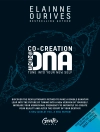As well as highlighting potentially useful applications for network analysis, this volume identifies new targets for mathematical research that promise to provide insights into network systems theory as well as facilitating the cross-fertilization of ideas between sectors. Focusing on financial, security and social aspects of networking, the volume adds to the growing body of evidence showing that network analysis has applications to transportation, communication, health, finance, and social policy more broadly. It provides powerful models for understanding the behavior of complex systems that, in turn, will impact numerous cutting-edge sectors in science and engineering, such as wireless communication, network security, distributed computing and social networking, financial analysis, and cyber warfare.
The volume offers an insider’s view of cutting-edge research in network systems, including methodologies with immense potential for interdisciplinary application. The contributors have all presented material at a series of workshops organized on behalf of Canada’s MITACS initiative, which funds projects and study grants in ‘mathematics for information technology and complex systems’. These proceedings include papers from workshops on financial networks, network security and cryptography, and social networks. MITACS has shown that the partly ghettoized nature of network systems research has led to duplicated work in discrete fields, and thus this initiative has the potential to save time and accelerate the pace of research in a number of areas of network systems research.
Содержание
FINANCIAL NETWORKS: 1. Mathematical modeling of systemic risk: H. Amini, A. Minca.- 2. Systemic risk in banking networks without Monte Carlo simulation: J. P. Gleeson, T. R. Hurd, S. Melnik, A. Hackett.- 3. Systemic Valuation of Banks — Interbank Equilibrium and Contagion: G. Hałaj.- 4. An Open Problem: J. B. Walsh.- II SECURITY NETWORKS: 5. Dynamic Trust Management: Network Profiling for High Assurance Resilience: M. Burmester , W. O. Redwood.- 6. Security Issues in Link State Routing Protocols for MANETs: G.Cervera, M.Barbeau, J. Garcia-Alfaro, E.Kranakis.-7. TCHo: a Code-based Cryptosystem: A. Duc , S. Vaudenay.- 8. Formal Method for (k)-Neighborhood Discovery Protocols: R.Jamet, P.Lafourcade.- 9. A Tutorial on White-box AES: J. A. Muir.- 10. Efficient 1-Round Almost-Perfect Secure Message Transmission Protocols with Flexible Connectivity: R. Safavi-Naini, M. Ashraful Alam Tuhin.- III SOCIAL NETWORKS: 11. Mathematical modelling to evaluate measures and control the spread of illicit drug use: A. Bakhtiari, A. Rutherford.- 12. Complex Networks and Social Networks: A. Bonato, A. Tian.- 13. NAVEL Gazing: Studying a Networked Scholarly Organization: D. Dimitrova, A. Gruzd, Z.Hayat, G. Ying Mo, D.Mok, Th. Robbins, B.Wellman, X. Zhuo.- 14. How Al Qaeda can use order theory to evade or defeat U.S. Forces: J.D.Farley.- 15. The ABCs of Designing Social Networks for Health Behaviour Change: The Vivo Space Social Network: N. Kamal, S. Fels, M. Blackstock, K. Ho.- 16. Evolution of an Open Source Community Network: N. Saraf, A. Seary, D. Chandrasekaran, P.Monge.- 17. Soci QL: A Query Language for the Social Web: D. Serrano, E. Stroulia, D. Barbosa, V. Guana.












